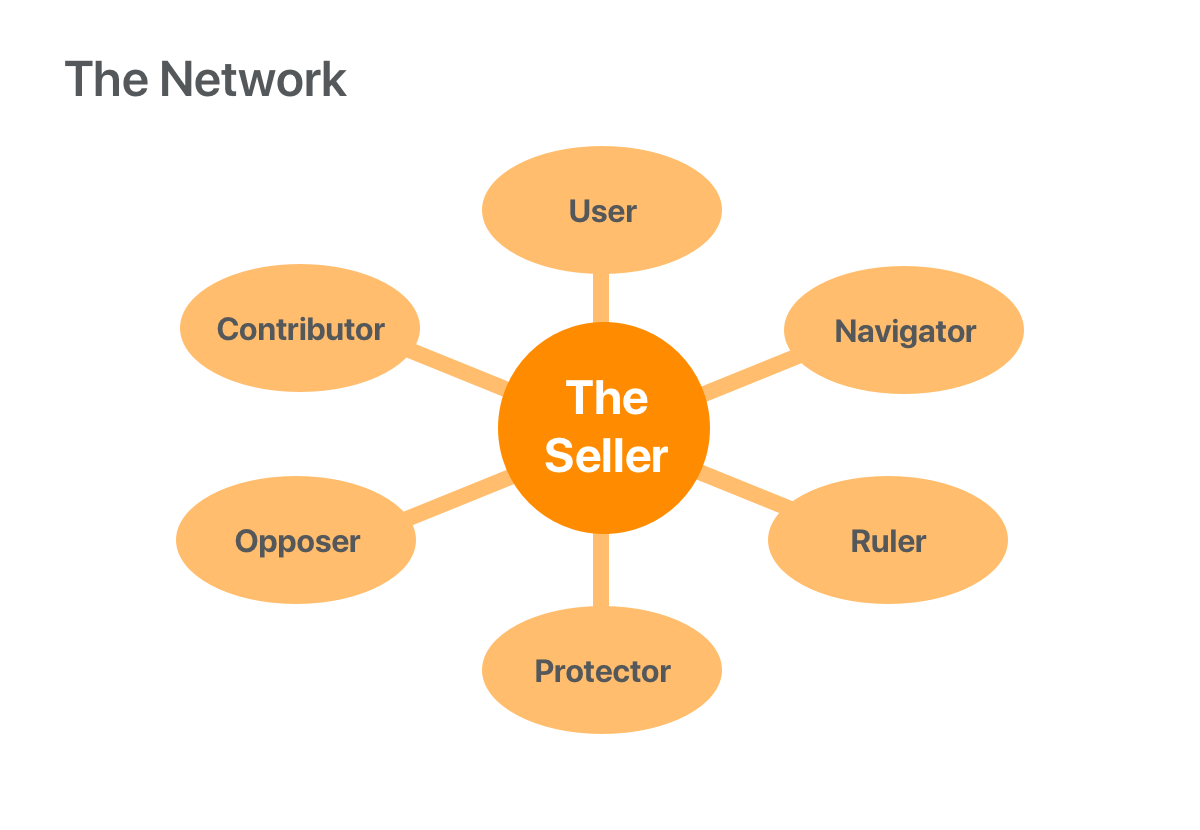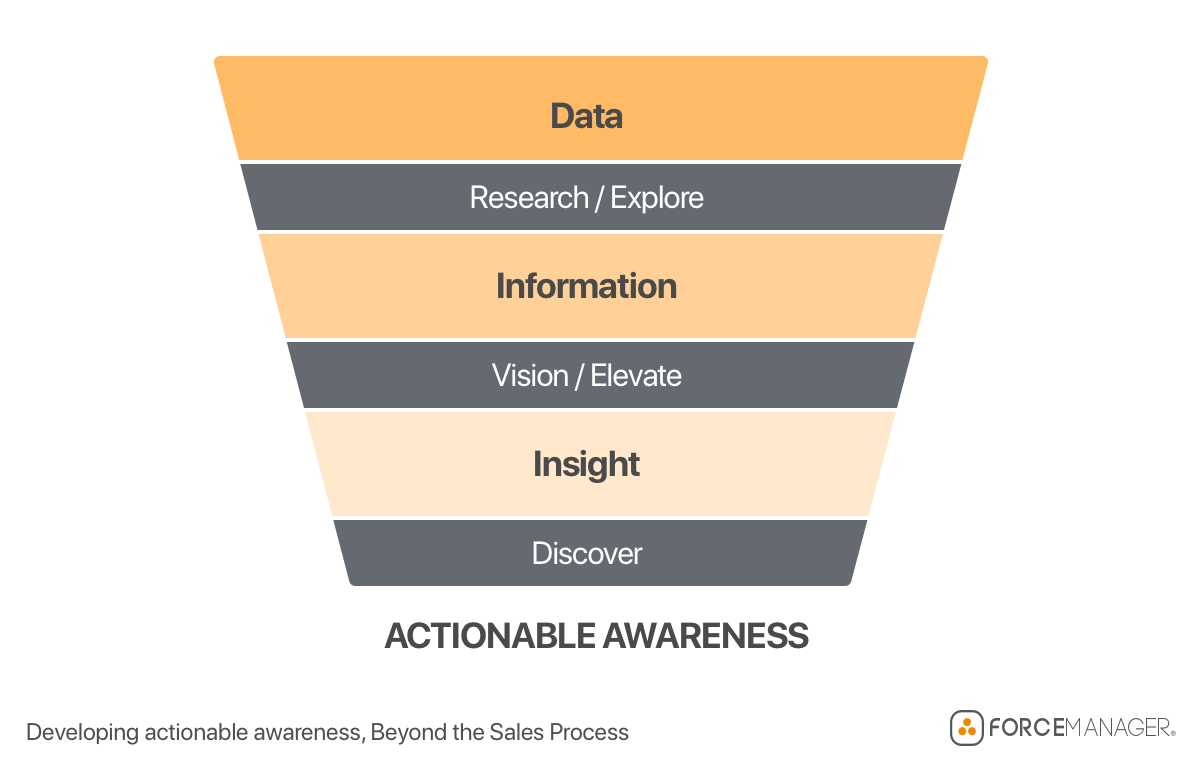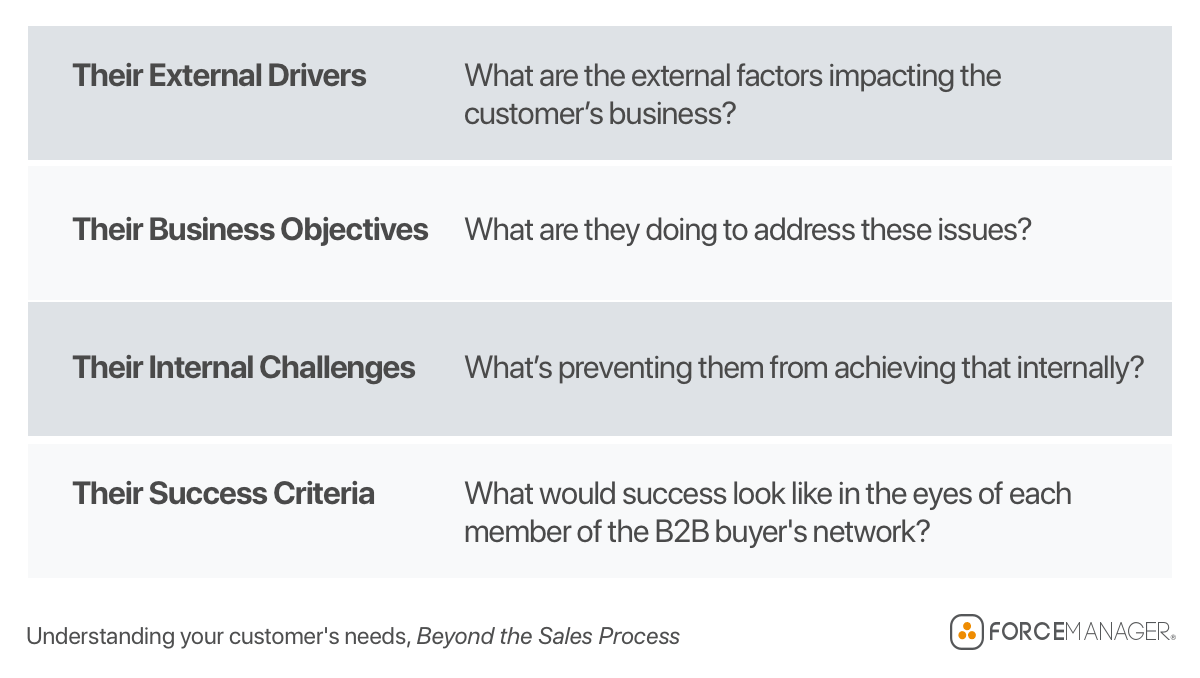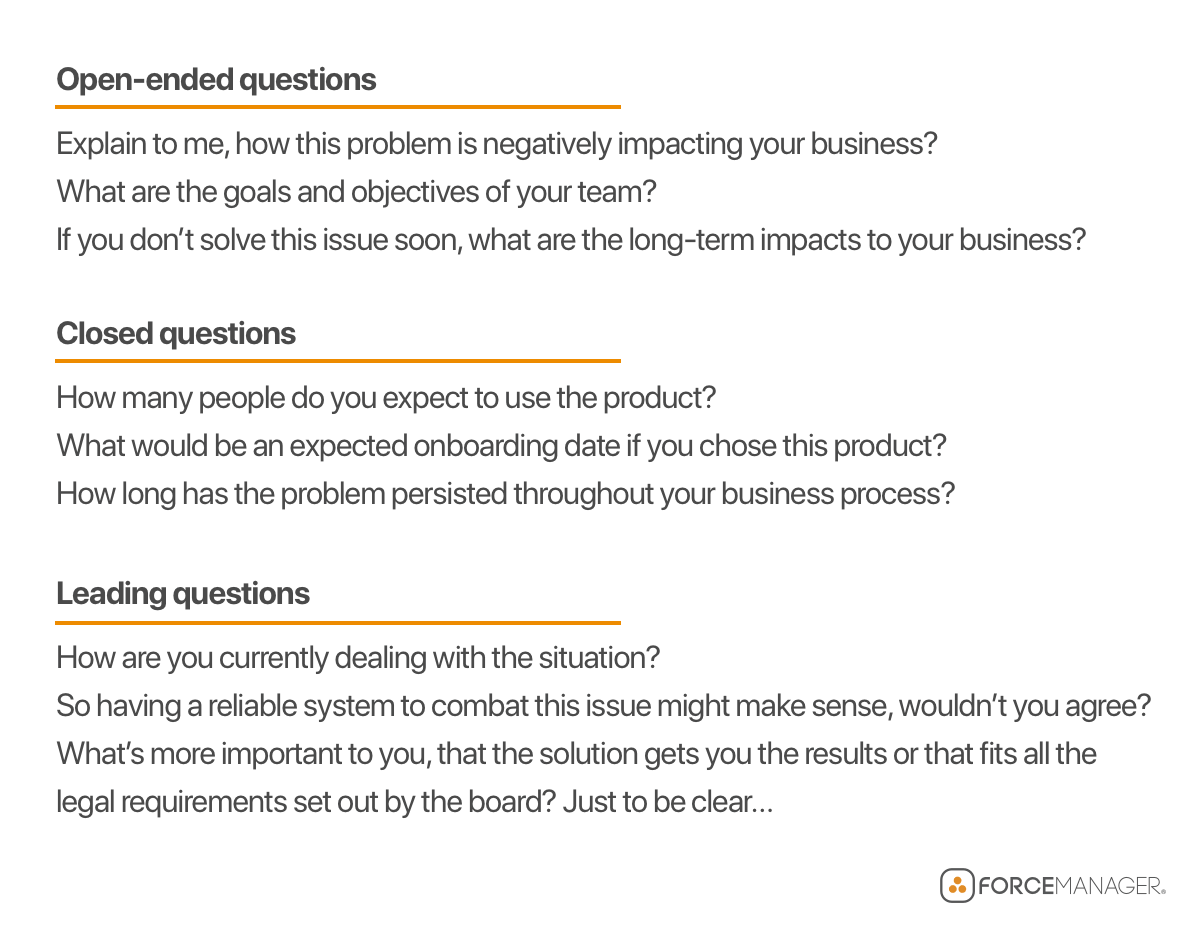Product
Features
column
column
Add-ons
Integrate
Custom Versions
Customers
By Industry
By Role
Success Stories
column
column
Pricing
Resources
Product Support
Education Resources
section
7 min read
B2B sales strategy has undoubtedly shifted over the past few years.
Previously, the goal (as a general rule) was to sell at any cost. It didn’t necessarily matter if the product or service solved a client’s exact pain points, so long as the sale went through.
Then the financial crash happened, changing the entire nature of the customer-seller relationship.
A conversation once dominated and driven by sales reps was wrestled back by customers who, as a result of financial pressure and an unprecedented amount of information available online, became increasingly self-educated on product options and market landscape.
Not only that, but the competition to win their business doubled.
This fact is supported by a recent Forrester study, which forecasts the US B2B market will be worth over $10.7 trillion by 2023.
So what can we do to get ahead of the competition? What goes into an award-winning B2B sales strategy? And how can I implement it across my sales team?
We will get to that later, but first, let’s define what constitutes B2B sales.
B2B sales, also known as business to business sales, refer to companies or salespeople who chiefly sell products or services to other businesses rather than to consumers.
The B2B sales process is often longer and more complex than B2C (business to consumer) as reps negotiate with large teams of decision-makers before closing the deal.
Sales expert Shane Gibson suggests that decision-makers behind the bigger deals typically form a network of any of the following six key players:

Selling to such a complex network is going to require a proven business to business sales strategy that uncovers a customer’s needs and puts your organization in a position to execute them.
Of the various B2B sales strategy examples around one which particularly stands out is the Discovery Model, a strategy proposed by sales authors Steve Andersen and Dave Stein in their book Beyond the Sales Process.
The Discovery Model focuses on gaining a thorough understanding of your customer’s business. Which external drivers are causing them to act? What are their business objectives? Are they facing any internal challenges? What does success look like for each individual in the network?
Achieving this level of customer understanding and alignment allows you to have conversations with your customers that competitors simply aren’t.
The first phase of this B2B sales strategy starts with gaining a comprehensive understanding of your customer’s business.
As you begin to invest more time and effort into the discovery process, the stronger the relationship becomes, and the higher your credibility stands.
CEO of Top Sales World Jonathan Farrington puts it as follows:
“Discovery allows us to demonstrate our credibility, knowledge, and commercial bandwidth – before I attempt to sell to you, I will show you that I understand your precise requirements.”
Field sales reps who demonstrate this level of understanding elevate themselves from a “me too” supplier position to a “well, there’s only one option now.” They will be able to step in and offer:
This understanding extends to each member of the B2B buyer’s network, too. Each person has a role to play and, therefore, individual goals. Knowing what they are and how to cater to their needs will go a long way in establishing credibility throughout the entire network.
The ultimate goal of Andersen and Stein’s B2B sales strategy is to achieve what they refer to as actionable awareness.
Actionable awareness is, as the authors put it:
“The final stage of data filtration, refinement, and prioritization. It is where data evolves into information, and information evolves into insight at a level where sales reps and account managers can do something with it.”
With the actionable awareness “distillation” process looking something like this:

Despite us now living in the age of “big data,” this process can be extremely challenging.
It’s easy to be misguided by the concept that all data is good data when it comes to customers. While the “more the merrier” concept applies under certain circumstances, such as initial prospection and early-phase conversation, too much data often leads to analysis paralysis.
Field reps and managers can get so caught up in over-analyzing each tiny detail that they miss the bigger picture, and fail to offer up any actionable insight.
For example, go back to the last customer account review one of your colleagues presented.
Compare how much time they spent extrapolating points easily found on the web, versus usable data on growing the account’s value, current market share, and how they planned to strengthen the relationship moving forward.
I’d wager the former took a sizeable chunk of time from the presentation.
This isn’t to criticize account manager reviews, but rather highlight that as companies increase investments in AI sales enablement tools, providing teams with ever-increasing quantities of data, occasionally we should take a step back to review how this data will be used.
Fortunately for us, there’s a plan to cut through the noise!
Remember, the overall goal of this sales strategy plan is actionable awareness. This means salespeople need to focus on understanding what customers care about, not the product, its features, supposed benefits, and any other noise that distracts them from this goal.
Andersen and Stein broke the most common customer concerns into four groups:

Any outside influences that cause your customers to modify, change, or in some way, adapt their business can be considered an external driver.
The ability to uphold a conversation about one or any of these factors demonstrates your willingness to go deep into a few challenges specific to the customer’s business.
Some examples of external drivers are:
Customer base: Their customers may be changing their buying habits, perhaps shifting over from retail to online.
Regulation: If your customer’s industry is subject to heavy regulation, either from a change in government policies or compliance rules, then this could be a potential external factor.
Shareholders: Most companies have shareholders who want results and want them now, forcing senior management to act with a sense of urgency.
Competition: Is pressure being exerted by a new competitor? Is an existing competitor releasing a new product that would make your customer’s obsolete?
Economy: Every business is at mercy to the shifting tides of the global economy, some more so than others. Perhaps your customer is particularly vulnerable to such sudden change?
This area of the conversation focuses on your customer’s planned response to the external drivers mentioned above.
An experienced salesperson will be able to uncover which of the external drivers take priority and align the business’s response with their solution.
Typically, the customer is looking to do one of three things:
Ultimately, salespeople will want to help customers improve all three of the above if possible, and the more trustworthy and credible they become, the less risk a customer perceives of entering business with them.
This step is about understanding if any internal barriers stop a customer from achieving any of their above objectives.
Is there an “opposer” within the buyer’s network? If trying to integrate a new software plug-in, is the IT team blocking its installation? Or perhaps there is an issue with the manufacturing process stopping them from ramping up production?
Whatever the case may be, it is hugely advantageous for salespeople to uncover these internal challenges. Even if not in a position to directly influence a positive outcome, reps will, at the very least, understand a customer’s train of thought when approaching certain subjects.
If there is indeed an opposer within the B2B buyer’s network, try and find out the reasons behind their objections.
Appease to their concerns with a calm, positive attitude. That way, if their objections are purely emotional, they’ll be forced to counter you with logical, business-first arguments.
What does success look like in your customer’s eyes? Not just at an organizational level, but at a personal level, too.
As we’ve already touched upon, most B2B sales strategies require dealing with a network of people, rather than a single entity.
Each member will have a departmental objective that filters into the overall corporate agenda, or “bigger picture” goal. The more salespeople interact with different members of the committee, the better they’ll understand what’s at stake for them individually.
This, of course, takes time. If the sales rep isn’t introduced to all key members of the B2B buyer’s network, it’s highly unlikely they’ll be receptive to such a direct question. However, once they establish a healthy relationship, salespeople will need to understand what individual success looks like for each key member.
If they can arrive at that level of understanding, it puts them in a commanding position.
Connecting their company’s business solutions to individual department-line objectives puts a significant degree of separation between themselves and the competition.
Unless you are fortunate enough to be presented with a guide to all your customer’s pain points, wants, and needs, like the rest of us, you will have to do a little digging.
The best way to do this is by asking questions.
As Stein and Andersen point out, however, most field-based reps ask overly technical questions of their customers.
Due to the high levels of product training they receive, this is normal, but the issue is they often lose sight of the value these products offer the customer.
And it’s this value that customers are searching for. They are looking for how your proposal can bring them closer to their needs and requirements as an organization.
To engage in a meaningful conversation with a prospective customer, salespeople need to ask a combination of open-ended, closed, and leading questions – just as they would in a day-to-day conversation with their partner.
So, what is the difference between open-ended, closed, leading questions?
You can find some sales-specific examples below:

It’s important to understand that this more than a simple exchange of data. It’s an opportunity for sales reps to gain insight and knowledge about a customer’s needs. Without this knowledge, it is impossible to align a solution with their business.
So to tie it all together, the Discovery Model B2B sales strategy is all about getting a real feeling for the customer’s business. What are their external drivers for change, their objectives, internal barriers, and long-term vision for success? To achieve that, salespeople need to ask a variety of questions appropriate to the individual members of the B2B buyer’s network.
Done correctly and with a little time and patience, you’ll soon find yourself dealing in a less crowded, more collaborative space with your customers.